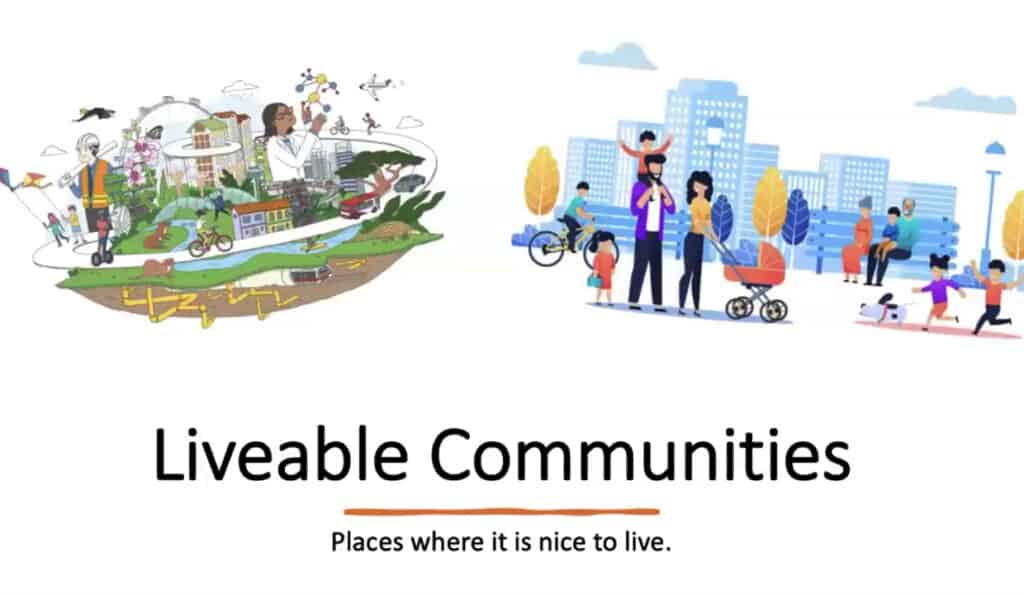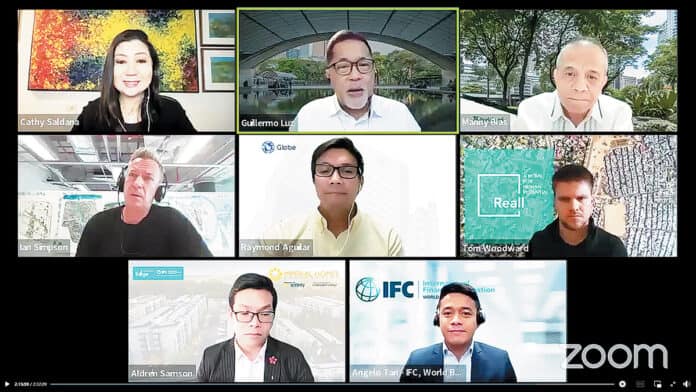
The needs of a certain community constantly change as time passes. Maybe there’s a need for more houses as its population grows, or maybe a need for various infrastructure to manage traffic in the area.
The way a community is planned may not always address the needs of its population in the future as the lifestyles of people change as they evolve, and as the world changes in general. This is why communities need to adapt to the changes of the times to be able to become more liveable.
What is a liveable community?
“Liveable communities are places where it’s nice to live.You feel safe, and there’s enough interesting things there,” said Manny Blas, vice president of Ayala Land Inc.’s Estates Strategic Business Unit.
Blas explained that there are five main factors that make a community more liveable.
The first is, it should be interconnected.
“I can go there easily and from there I can go to other places. Transportation is available, the traffic is managed well,” Blas said at a webinar by Liveable Cities Philippines.
He added that it should be pedestrian friendly, where people can walk safely and comfortably, and offer a lot of open spaces where they can relax.
Blas emphasized that liveable communities should also offer a complete mix of uses.

“Every livable space has a complete mix of uses. It’s not just everybody lives in one place and everybody shops in another place. But it’s more of everybody lives and shops all in the same place, and I can walk wherever I need to go,” he explained.
Another important factor for a liveable space is that it should be sustainable.
“Liveable communities are more sustainable because you are able to organize and practice eco-efficiency. You encourage people to walk and bike,” Blas said.
Adapting to changes
While all of those factors may be addressed in masterplanning the development of a certain community, Blas explained that issues may arise in the future that may affect the liveability of the community.
He cited the Makati Central Business District (CBD) as an example, where enhancements need to be made to a city’s masterplan.
Sometime in the 1990s when traffic really started to be heavy — sometime in 1995 to 1996 — we started to build the overpasses,” Blas said, referring to a 1.4-km. overpass along Dela Rosa St., which connects the Glorietta all the way to the Makati Medical Center.
“We also built these underpasses so people can cross the street without interfering with traffic,” Blas said, adding that there are eight underpasses along Ayala Avenue.
“But these were adjustments not in the original plan, but had to be made in the middle of the plan in order to address the issues happening at that time,” he added.
Tactical urbanism approach
Blas shared that a tactical approach is effective in addressing the problems of an urban community, where you implement changes one at a time, instead of adjusting the whole system.
This can be done by first identifying what are the major pain points of a community, then identifying what are the tactical solutions to that.
He stressed that this should be done in a planning-by-doing approach.
“In other words you try it out, experiment with it and it becomes very flexible. If it doesn’t work you can take it out,” Blas said.
As an example, Blas cited that in many cities, one major pain point is having an organized bus or jeep stop.
He shared this was seen in the bus/jeep stops along Ayala Avenue before the pandemic, where there was no organized system for commuters to get into buses.
To solve this, Blas said a queueing system was created where signages were put up for commuters to line up depending on their destination.
Creating sustainable buildings
As sustainability is an important factor in making a community liveable, ensuring that buildings are green and resilient is something that should also be focused on.
“Our country is confronted by the dual challenge of climate change mitigation and also climate change adaptation. At this point, even though our country is considered a low-emitting country, we need to be part of this solution rather than be part of the problem,” said Angelo Tan, Philippine country lead of the International Finance Corp.(IFC)’s Climate Business Department.
“But in whatever approach we take in making our cities more liveable, resilient and green, we need to ensure that our approaches are quantitative, and that we don’t just rely on qualitative description of what is green and what is resilient,” he added, emphasizing the need to set and and achieve quantitative targets.
One way to do so is by making use of the Excellence in Design for Greater Efficiency (EDGE) green rating system for buildings offered by the IFC.
Tan said EDGE is a simpler green building standard compared to other green building standards as it focuses on energy, water and material, while other rating systems feature more parameters.
“For a project to meet the EDGE standards, you have to demonstrate at least 20-percent efficiency on energy water and materials,” Tan said.
In addition, Tan pointed out that another difference between EDGE and other green building rating systems is that it offers free software.
“It’s actually a website that allows developers, building owners, and local governments to identify the most cost-effective measure to build green,” he said.
When we talk about buildings, not just the privately developed buildings, it can also be government buildings and we are collaborating with some government units already on applying EDGE for these types of buildings,” he added.
According to Tan, there are already 50 projects in the country that are EDGE-certified.
Resilient buildings
Apart from ensuring the sustainability of a building, Tan stressed that resilience is another concern that should also be given importance.
He pointed out that resilience is a very real concern for the country as it has already experienced the impact of climate change, citing stronger natural disasters such as typhoons.
“And we know no matter how sustainable we design our buildings, if it cannot withstand a fire or earthquake or volcanic eruption or a flood, then all of our efforts in making our buildings more sustainable will go to waste,” Tan said.
To ensure the resilience of buildings, the IFC offers the Building Resilience Index (BRI), which helps buildings identify and manage risks of their developments based on their location.
Tan said that there are already 40 projects in the country with a total of 1.86 million square meters of space that are pledged under the BRI.
The benefits of sustainability and resilience
Tan cited the case of a housing project by local developer Imperial Homes Corp. in Batangas as a project that has been EDGE-certified and BRI-assessed.
“When we applied for EDGE, we were upgraded to EDGE advanced from standard knowing that we save more than 40 percent in electricity,” said Imperial Homes chief operating officer Alden Samson adding it saved 71 percent on electricity.
He added that the project also saved more than 60 percent in other parameters such as water and materials.
“We’ve been working with IFC for many years now and the first thing that we wanted to do was integrate sustainable and resilient technologies into our affordable housing market,” Samson said.
“In 2017, after we launched the solar powered communities, we integrated green building technology from Denmark called Connovate, which provides superior resiliency as the technology provides 20 times the strength of concrete hollow blocks,” Samson said.
With the benefits offered by sustainable and resilient buildings, having these structures in a community will indeed contribute to making it more liveable.
If you like this article, share it on social media by clicking any of the icons below.
Or in case you haven’t subscribed yet to our newsletter, please click SUBSCRIBE so you won’t miss the daily real estate news updates delivered right to your Inbox.
The article was originally published in The Philippine Star – Property Report PH and written by Catherine Talavera.







More Stories
Vista Land Celebrates 50 Years with Sandiwa: An Event Honoring Leadership, Legacy, and the Filipino Dream of Homeownership
Vista Land Celebrates Love Month in Ilocos Region
Vista Land Bridges Cebuano Heritage and Progress with Valencia by Vista Estates